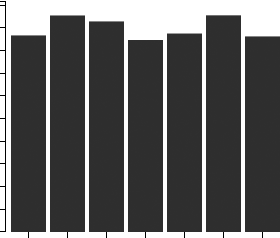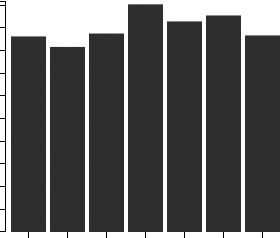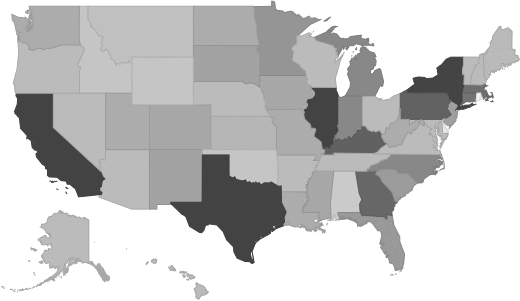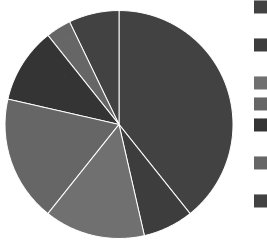Automotive Parts & Accessories Stores Industry - Market Research Report
Industry Overview
This industry comprises one or more of the following: (1) establishments known as automotive supply stores primarily engaged in retailing new, used, and/or rebuilt automotive parts and accessories; (2) automotive supply stores that are primarily engaged in both retailing automotive parts and accessories and repairing automobiles; and (3) establishments primarily engaged in retailing and installing automotive accessories. Illustrative Examples: Automotive parts and supply stores Truck cap stores Automotive stereo stores Used automotive parts stores Speed shops
Source: U.S. Census BureauMarket Size and Industry Forecast
This research report analyzes the market size and trends in the Automotive Parts and Accessories Stores industry. It shows overall market size from 2020 to the present, and predicts industry growth through 2030. Revenues data include both public and private companies.
| Historical | Forecasted |
|---|
| 2020 | 2021 | 2022 | 2023 | 2024 | 2025 | 2026 | 2027 | 2028 | 2029 | 2030 |
|---|
| Market Size (Total Revenue) | Included in Report |
| % Growth Rate |
| Number of Companies |
| Total Employees |
| Average Revenue per Company |
| Average Employees per Company |
Source: U.S. government financial dataIndustry Revenue ($ Billions)

Industry Forecast ($ Billions)

Advanced econometric models forecast five years of industry growth based on short- and long-term trend analysis. Market size includes revenue generated from all products and services sold within the industry.
Geographic Breakdown by U.S. State
Market size by state reveals local opportunity through the number of companies located in the region. Each state's growth rate is affected by regional economic conditions. Data by state can be used to pinpoint profitable and nonprofitable locations for Automotive Parts & Accessories Stores companies in the United States.
Automotive Parts & Accessories Stores Revenue by State

Distribution by Company Size
| Company Size | All Industries | Automotive Parts & Accessories Stores |
|---|
| Small Business (< 5 Employees) | Included |
| Small Business (5 - 20) |
| Midsized Business (20 - 100) |
| Large Business (100 - 500) |
| Enterprise (> 500) |
Automotive Parts & Accessories Stores Industry Income Statement (Average Financial Metrics)
Financial statement analysis determines averages for the following industry forces:
- Cost of goods sold
- Compensation of officers
- Salaries and wages
- Employee benefit programs
- Rent paid
- Advertising and marketing budgets
The report includes a traditional income statement from an "average" company (both public and private companies are included).
| Industry Average | Percent of Sales |
|---|
| Total Revenue | Included |
| Operating Revenue |
| Cost of Goods Sold (COGS) |
| Gross Profit |
| Operating Expenses |
| Operating Income |
| Non-Operating Income |
| Earnings Before Interest and Taxes (EBIT) |
| Interest Expense |
| Earnings Before Taxes |
| Income Tax |
| Net Profit |
Average Income Statement

Cost of Goods Sold
Salaries, Wages, and Benefits
Rent
Advertising
Depreciation and Amortization
Officer Compensation
Net Income
Financial Ratio Analysis
Financial ratios allow a company's performance to be compared against that of its peers.
| Financial Ratio | Industry Average |
|---|
| Profitability Ratios | Included |
| Profit Margin |
| ROE |
| ROA |
| Liquidity Ratios |
| Current Ratio |
| Quick Ratio |
| Activity Ratios |
| Average Collection Period |
| Asset Turnover Ratio |
| Receivables Turnover Ratio |
| Inventory Conversion Ratio |
Products and Services Mix
Product lines and services in the Automotive Parts & Accessories Stores industry accounting for the largest revenue sources.
| Product Description | Description | Revenue
($ Millions) |
|---|
| Industry total | Included |
| Automotive tires, tubes, batteries, parts, accessories |
| Automotive parts, new and rebuilt, including wheels |
| Automotive supplies |
| Auto access, including safety & comfort related items |
| Automotive parts, used, including wheels |
| Automotive batteries |
| Automotive lubricants, including oil, greases |
| All nonmerchandise receipts |
| Audio equip, musical instr, radios, stereos, cds, records |
Salary information for employees working in the Automotive Parts & Accessories Stores industry.
| Title | Percent of Workforce | Bottom Quartile | Average (Median) Salary | Upper Quartile |
|---|
| Management Occupations | 3% | Included |
| Chief Executives | 0% |
| General and Operations Managers | 2% |
| Sales and Related Occupations | 41% |
| Supervisors of Sales Workers | 6% |
| First-Line Supervisors of Sales Workers | 6% |
| First-Line Supervisors of Retail Sales Workers | 6% |
| Retail Sales Workers | 33% |
| Counter and Rental Clerks and Parts Salespersons | 22% |
| Parts Salespersons | 20% |
| Retail Salespersons | 11% |
| Retail Salespersons | 11% |
| Office and Administrative Support Occupations | 8% |
| Installation, Maintenance, and Repair Occupations | 32% |
| Vehicle and Mobile Equipment Mechanics, Installers, and Repairers | 28% |
| Automotive Technicians and Repairers | 12% |
| Automotive Service Technicians and Mechanics | 12% |
| Miscellaneous Vehicle and Mobile Equipment Mechanics, Installers, and Repairers | 15% |
| Tire Repairers and Changers | 15% |
| Transportation and Material Moving Occupations | 15% |
| Motor Vehicle Operators | 13% |
| Driver/Sales Workers and Truck Drivers | 13% |
| Light Truck or Delivery Services Drivers | 12% |
Government Contracts
The federal government spent an annual total of
$4,677,992 on the automotive parts & accessories stores industry. It has awarded 1,129 contracts to 144 companies, with an average value of $32,486 per company.
Top Companies in Automotive Parts & Accessories Stores and Adjacent Industries
| Company | Address | Revenue
($ Millions) |
|---|
Included |



